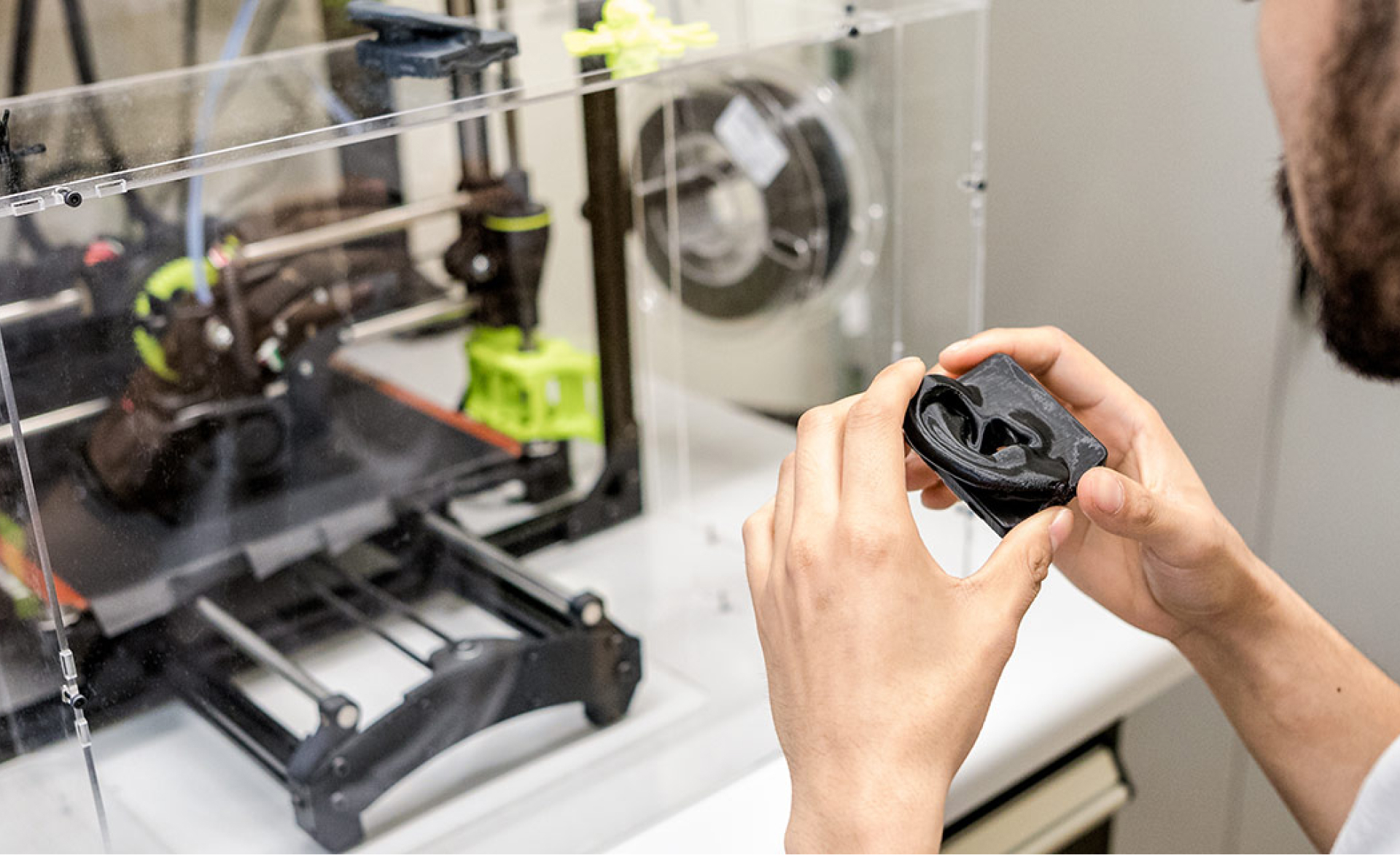A Multi-Purpose Hearing Device

In the early 2000s, PhD student Jérémie Voix, now a professor of mechanical engineering at ÉTS, designed an in-ear device that drew the attention of Sonomax, a company now known as EERS Global.
Over the next 20 years, this technology designed to protect workers’ hearing health led to new standards and recommendations for hearing protection. It also broke into international markets specializing in cutting-edge hearing technologies and led to new applications. These hearing aids have impressive capabilities. Beyond protecting hearing health, they could also be equipped to harness the energy from chewing to recharge themselves. Fascinating, right?
Interacting with interfaces
Some hearing devices worn by workers in noisy environments are equipped with an in-ear microphone capable of capturing audio signals inside their occluded ear canal.
Although the microphone is primarily used to pick up speech in noisy environments, it can also capture other, non-verbal signals. The research team believes those signals could be used to interact with the hearing device or a computer.
From chewing to recharging
Hundreds of millions of people have to replace the button batteries of their hearing aids. Unfortunately, having to change batteries generates waste, is time-consuming and expensive, and requires a fair bit of manual dexterity. However, it may be possible to make hearing aids self-sufficient by harnessing the energy generated by the motion of chewing.
In a very short period of time, in-ear devices have evolved from simple hearing aids to a plethora of electronic devices, such as wireless headphones and digital earplugs. These devices all rely on batteries, which are not only cumbersome but also come with a host of other disadvantages.
The research team is investigating the possibility of using the ear canal movements caused by jaw activity to provide energy to the in-ear devices.
Earning numerous awards and recognition
The sheer potential of all these technologies has earned the team numerous honours and distinctions: CES Awards, Edison Awards, best product award from Association des directeurs de recherche industrielle du Québec and Réseau conseil en technologie et en innovation (ADRIQ-RCTI), to name just a few.



